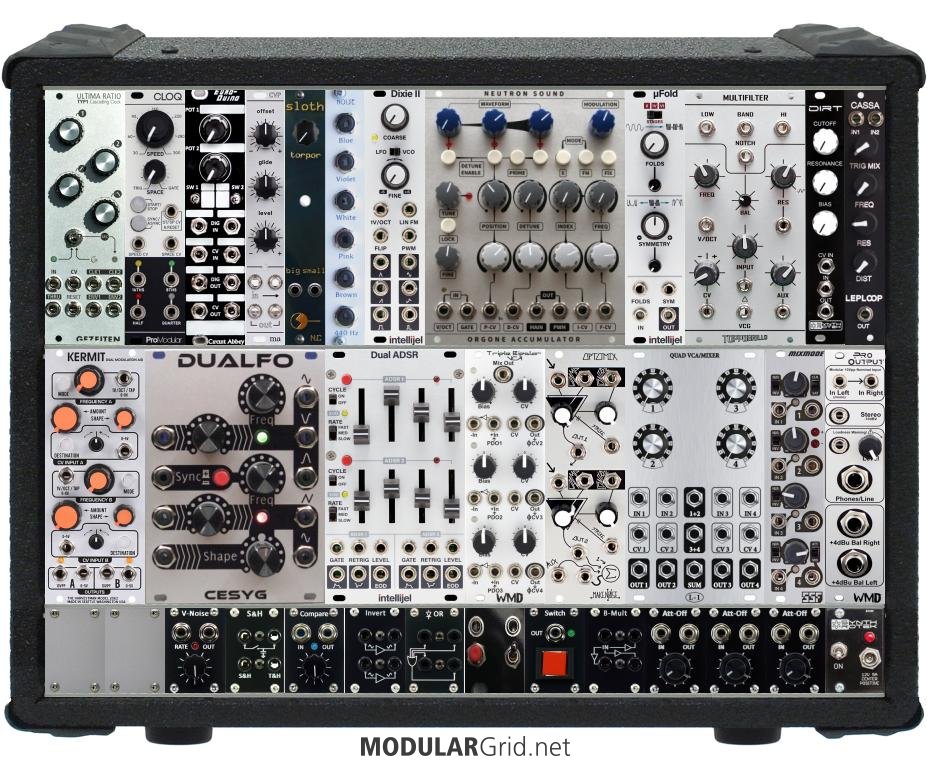All, here is the (mostly final) proposed version of my rack. I'm a noob, so please tell me any oversights or mistakes I might be making.

I wanted a starter system with room to grow, largely composed of well regarded, easy-to-get modules.
Notes:
* It uses Synthrotek's Powered Waterproof 6U + 1U Portable Eurorack Case, with 2 x 84hp of Euro, and 1 x 84hp of tiles. This should provide plenty of power and depth, even for the DuaLFO.
* The Euroduino is supposed to run a custom sequencer that I intend to write (I'm a brand-new wiggler, but a pretty good programmer). The Cloq will provide the basic clocking, and the Euroduino will control the Befaco VC Slew Limiter for constant-time slew between notes.
* I'm most-likely going with the Orgone Accumulator. If so, I will commission it from synthCube. I am not a DIY guy yet.
* Have 2 1U tile Noise sources for really basic percussion, with a simple EG coming from the Strike input of the Optomix.
Questions:
* The oscillator was by far the hardest decision to make. I like the big sound of the Orgone Accumulator, and it seems to work well with a smaller system (a reasonable number of CV ins, and only two outs). The Dixie is primarily there for modulation duties. Any other suggestions?
* Is the Pittsburgh Low Pass Gate a good match for the Accumulator? Or should I go with a traditional filter?
* Should I wait for the PulpLogic 8U 'Magnum' lunchbox case, whenever it comes? (2x euro @ 96HP, 2x tile @ 96HP). It is vaporware, as far as I can tell.
Thanks for your input!
-Ken
